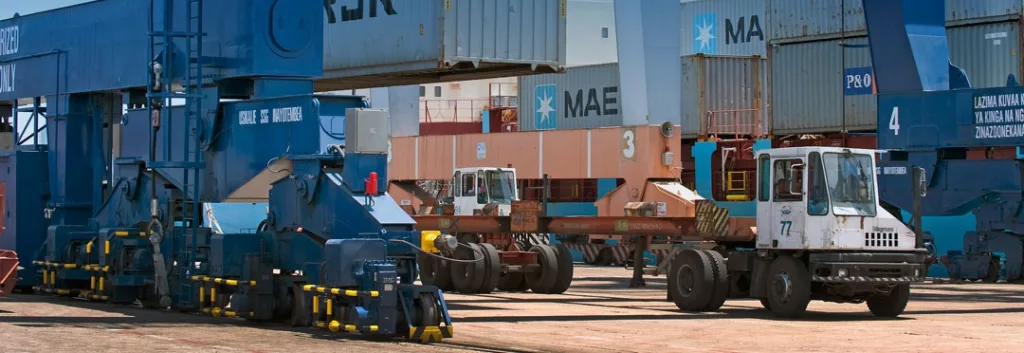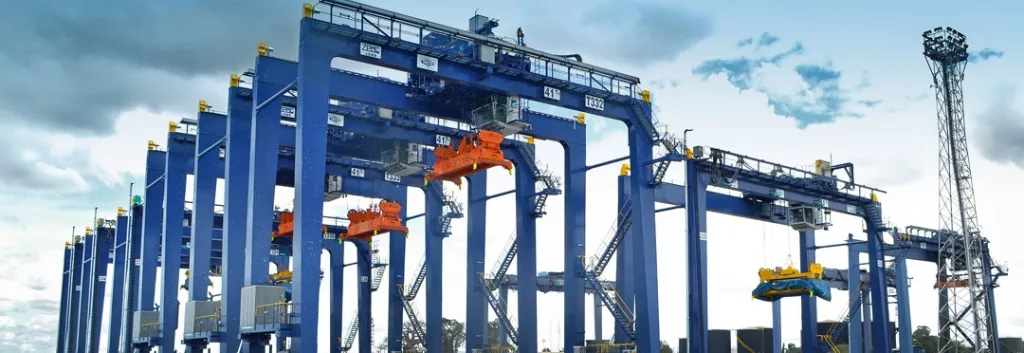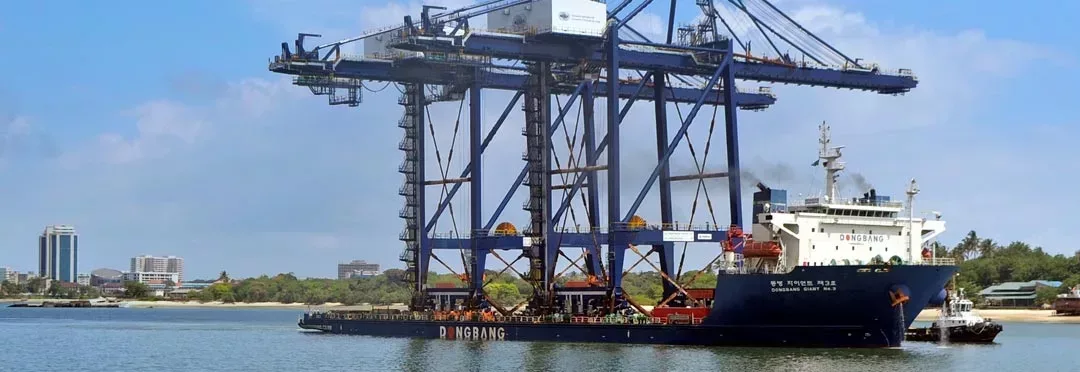For Tanzania International Container Terminal Services, 2018 will be focused on returning the Port’s volume growth, in order to meet the ever-broadening capacity requirements of the East and Central African region.
EXPANSION IS THE FIRST PORT OF CALL
Chief among said successes was the realisation of the Company’s ambition to handle more than 500,000 TEUs (twenty foot equivalent units) in 2017, and as this statistic was surpassed, it represented a much more all-encompassing gauge of growth, volume, client loyalty, capacity and continuous improvement.
“This was in addition to other success stories as well though,” Chief Executive Officer, Jared Zerbe interjects. “In 2017, we also signed a new lease agreement with the Government; we introduced a new shipping line which started calling at our Terminal; we formed a partnership with Ms Ecobank to facilitate our customers’ payments in Tanzania as well as the transit countries of DRC, Rwanda, Zambia and Uganda; and we completed our new data centre.”
The latter advancement was complemented by an upgrade of TICTS’ terminal operating system as a testament to the Company’s application of technological innovation in the continuous improvement process. And all aforementioned elements combined helped to contribute to double digit throughput growth, reinforcing TICTS’ status as the largest specialised container terminal in Tanzania – a position it has enjoyed for most of its 18-year tenure since inception at Dar es Salaam Port in 2000.
As the largest specialised container terminal in Tanzania, Tanzania International Container Terminal Services manages the container handling activities at Berths 08, 09, 10 and 11 and the Inland Container Depot at Kurasini. Since 2000 TICTS has handled more than five million TEUs which is more than 75 percent of the Tanzania Sea Trade. It has also played a significant role in the supply chain to and from Tanzania and the landlocked countries in Eastern, Central and Southern Africa.
“Over the years since 2000, TICTS has made more than US$100 million in investments which have significantly improved productivity and efficiency to the Port’s users,” said Zerbe.
Over the past year, there have been numerous significant capital expenditures which range from the data centre unveiling to a plethora of additional tweaks to the Terminal’s facilities, equipment and service technologies.
Zerbe details: “These include, on the tech side, a landside digitalisation project (LDP) and e-payment processes related to online banking and PoS solutions; on the admin side, LDP and turnstile projects; and from a facility perspective, equipment additions and upgrades to the yard and workshop aimed at creating additional space.”

THE PORT OF CHOICE
As a subsidiary of Hutchison Ports, under the multinational conglomerate, CK Hutchison Holdings Limited, TICTS’ specialties across vessel discharge and loading, container storage, warehousing, container stuffing and destuffing, and customs verification have epitomised the flexibility and scope that has facilitated its growth over the past 18 years.
“Tanzania International Container Terminal Services is one of the most efficient terminals in Africa and has one of the best terminal operating systems allowing us to serve our customers more efficiently and accurately than other regional terminals can,” Zerbe noted a year ago. “Our customers can rely on us to handle things efficiently, having confidence in our systems and corporate governance as well as security of our facilities, which – for developing countries – is especially important.”
Customer reliability is certainly not a given though, and TICTS has made concerted efforts over the years to hone its processes and facilities in order to remain contemporary, relevant and ahead of the industry curve for its clients’ sake.
“Over the past year, we have enhanced control measures by building key supplier partnerships focusing on tight controls on time and attendance,” Zerbe explains regarding process enhancements. On the investment side of things, “we have invested in additional cargo handling equipment, especially empty container handlers and forklifts”, the CEO continues.
“2017 was about stabilising the ongoing business, but 2018 has very much been focused on growing throughput and making Dar es Salaam Port the port of choice for the East and Central African region.”
To this end, TICTS has increased the Terminal’s capacity by removing old equipment and by relocating its workshop. An additional redesign of the gate-house driveway, and a more strategic management of how traffic flows into the Terminal, have also complemented its overall capacity-broadening targets.
“We need to continue to invest and become smarter and more efficient,” Zerbe has emphasised. “We note that in our industry in Africa there are more and more ports being developed, and especially in East Africa there are a lot of competing regional ports planning expansions. Also, as the world’s shipping industry consolidates, there will be more competition regionally and our customers will be in a stronger position.”
He picks up: “The ability to increase yard capacity and efficiency is vital in order to handle increased volumes. TICTS has the required cargo handling equipment, technology and expertise to handle these volumes. But now just needs more space and improved cargo clearance processes from stakeholders in order to reduce high dwell times.”

EVOLVING THE PORT
Such changes on an internal note are all the more poignant given recent regulatory transformations enacted in Tanzania. For example, the new Tanzania Shipping Agencies Act has established the Tanzania Shipping Agencies Corporation to regulate marine transport in the country.
To meet these challenges and opportunities head on, not only does there need to be an emphasis on up-scaling, but also up-skilling. And TICTS has responded in kind via the appointment of a new Head of Human Resources and Administration that will keep current employees at the forefront of all pressing regulations, while at the same time identifying fresh talent to usher in the next few years of Terminal progression.
“We need to work to develop existing staff members to help them build up their abilities and knowledge,” Zerbe stated. “We also have the advantage of having as our majority shareholder the world’s largest port operator, so we send many of our employees for training at our headquarters and regional centre.
“We have short, medium and long-term staff development plans to promote employees to more advanced positions as they grow in ability and skills.”
Supply chain management will take on extra prevalence over the coming 12 months too, with these small – yet significant – tweaks critical as the industry and region gains pace simultaneously.
Zerbe concludes: “Over the next 12 months, positive developments will continue at TICTS. We aim to remove old TPA quay cranes; identify additional space outside the Port; improve the gate process; further streamline the landside operations; and continue to cooperate with stakeholders – both public and private – to further enhance the Port’s operations.”






























